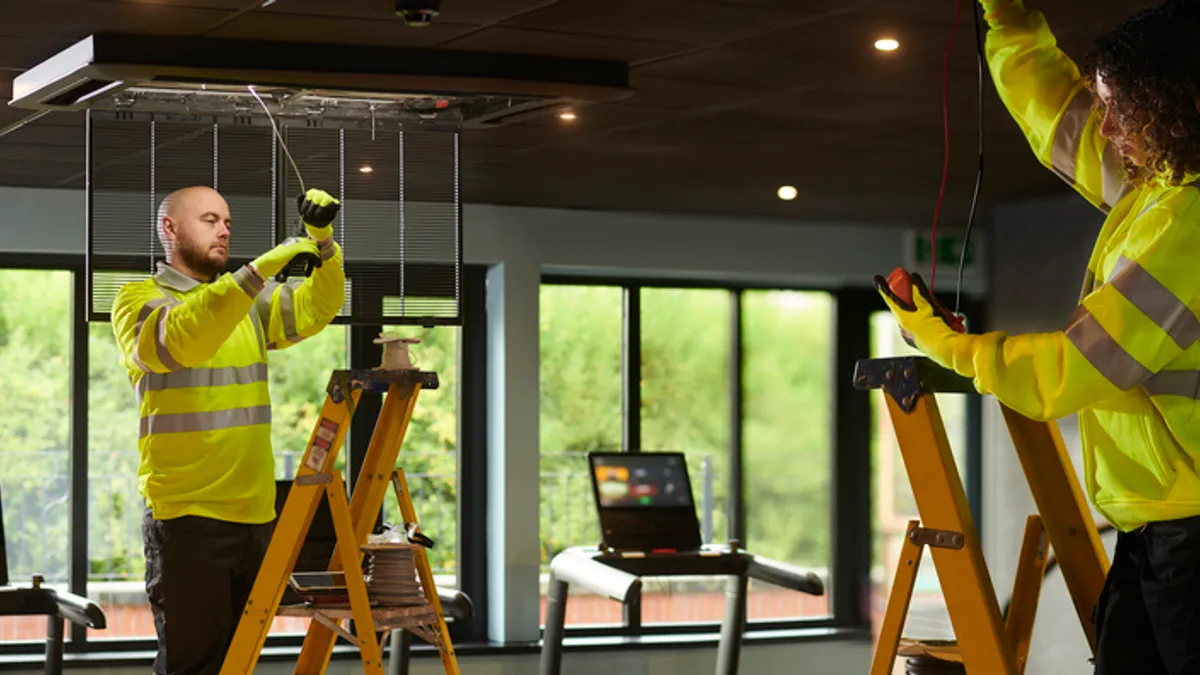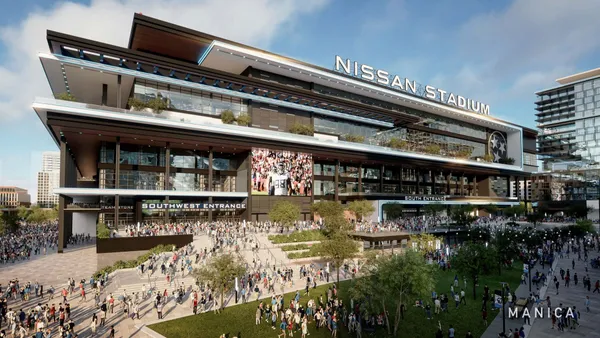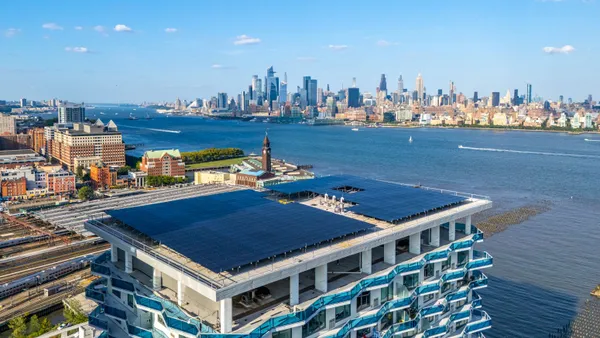The under-construction future home of the NFL’s Tennessee Titans, the new Nissan Stadium, provides an opportunity for Schneider Electric to pull all the different technology it uses inside one facility to help operators visualize data across all the mechanical and electrical subsystems to help the organization meet its sustainability goals, Dave Rellinger, vice president of U.S. branches at Schneider Electric, told Facilities Dive.
The new Nissan Stadium, an approximately 2.1-million-square-foot facility set to open in 2027, will use Schneider Electric’s solutions throughout, including clean uninterruptible backup power and IT physical infrastructure, electrical power distribution and controls systems, and an integrated building management system, the company says.
These technologies are intended to help the stadium enhance energy efficiency, reduce emissions and provide increased operational control over the stadium’s infrastructure. The improvements are anticipated to provide a 20% reduction in energy consumption and a 30% reduction in downtime, Schneider Electric said in March.
“Tennessee and Nashville are known for their rolling thunderstorms and blackouts. They don’t black out an event [at the stadium], but sometimes that burden falls on the community around it,” Rellinger said. “So, there's a really significant responsibility for the stadium to be as efficient as possible and operate as efficiently as possible, so we can participate in alleviating the grid when there's events.”
“With millions of fans expected to visit annually, ensuring optimal energy performance is a key priority in the new Nissan Stadium,” Dan Werly, chief operating officer of the Tennessee Titans, said in a statement.
To accomplish this, the company will visualize all electrical and mechanical infrastructure in the building through a single command center that is able to visualize what’s going on with HVAC and other systems in real-time, Rellinger said. “We are going to be able to pinpoint, almost with a laser, where the HVAC loads and where the power consumption is. Where we will unlock a lot of efficiency for Titans is the ability to see the performance of HVAC and power as well as for their vendors and concessions.”
Ensuring a successful handoff between construction and operation teams comes down to factory acceptance testing, “which is kind of a lost art in our industry,” Rellinger said. “Before we engineer the complete front end, all the graphics, alarms, schedules, even the sequences … we bring the stakeholders into our office — that's the general contractor, the design and commissioning agents — and they'll all have a chance to review what we're going to build.”
“This is like the [first iteration of the] digital twin so they can really start to visualize what it might be like to operate the building, years before it's physically built,” he said. “The light bulb starts to go off around what they're going to have ownership of when we turn it over to them, how it's going to work, and they get to inform us of all the customization that they really would like to see in it before it becomes a day-two activity,” or those day-to-day operations that occur after a facility opens.














